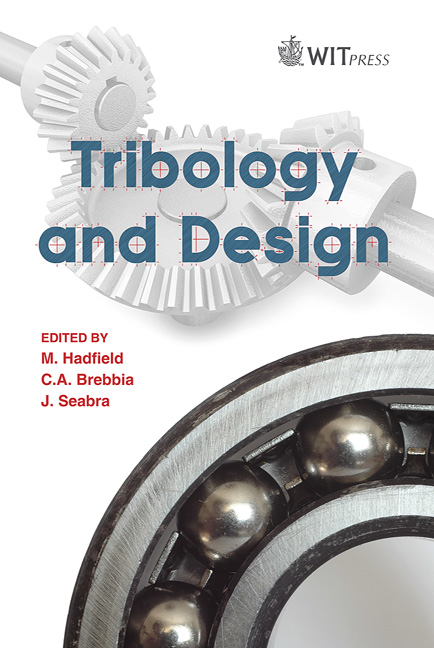A New Identification Method Of The Supply Hole Discharge Coefficient Of Gas Bearings
Price
Free (open access)
Transaction
Volume
66
Pages
11
Page Range
95 - 105
Published
2010
Size
681 kb
Paper DOI
10.2495/TD100091
Copyright
WIT Press
Author(s)
G. Belforte, F. Colombo, T. Raparelli, A. Trivella & V. Viktorov
Abstract
The paper shows a new methodology to identify the orifice discharge coefficient of pneumatic externally pressurized bearings. A common method of identification is to measure the experimental air flow, the supply pressure and the local maximum of the pressure distribution in the bearing clearance near the supply hole. This method however involves some practical difficulties especially with small supply hole diameters due to the high pressure and velocity gradients near the supply holes. The proposed new method requires both theoretical and experimental approaches. It differs from the previous method because the experimental activity involves measuring only the pressure in correspondence of one specified point under the pad far from supply holes. The pressure distribution under the pad is calculated by solving the Reynolds equation. The pressure boundary condition near the supply holes and consequently the pressure distribution in the pad clearance depend on the supply hole discharge coefficient. By using the bisection method the discharge coefficient value is changed iteratively in order to find the convergence of the experimental pressure value with the numerical one. The discharge coefficient is obtained when the experimental pressure measured in the selected point corresponds with the calculated one. This new method is simpler to realize experimentally and it is less sensitive to the position of the measuring hole. Air pads with different supply hole diameters are tested. The pressure distribution under the pads is determined experimentally using a test bench at the purpose realized. The tests are carried out with different air clearances and supply pressures. Keywords: pneumostatic air pad, discharge flow coefficient, gas lubrication, gas bearing.
Keywords
pneumostatic air pad, discharge flow coefficient, gas lubrication, gas bearing





